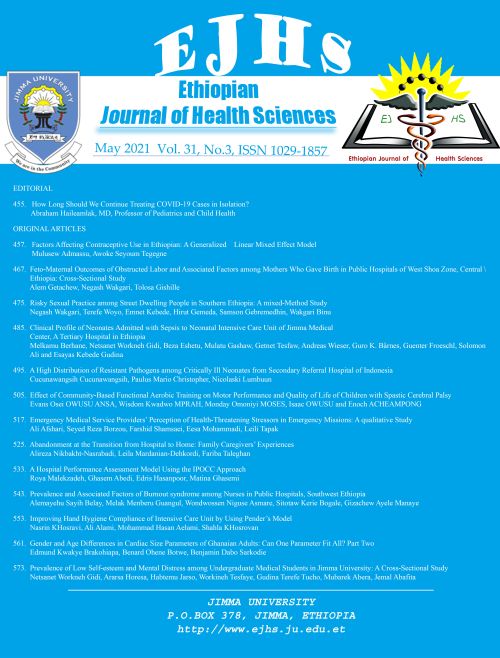Main Article Content
A High Distribution of Resistant Pathogens among Critically Ill Neonates from Secondary Referral Hospital of Indonesia
Abstract
BACKGROUND፡ The spread of resistant pathogens among critically ill neonates has increased in recent years. Therefore, information about the antimicrobial profile and its susceptibility over time helps to select the most appropriate therapy. The study assesses the distribution of resistant pathogens and its
susceptibility among neonates’ patients.
METHODS: Eight hundred and eight suspected neonatal infected from January 2011 to December 2019 were recruited anonymously in our retrospective, observational analysis. The study was conducted in the secondary-care level NICU which located on the western border of Jakarta, Indonesia. The MDROs
definition was define by Centre for Disease Prevention and Control (CDC) criteria and standardized international terminology. Microbial identification and susceptibility testing were carried out following standard protocols.
RESULTS: Culture positivity was found in 132 (16.3%) with dominating MDR-Gram negative bacteria 47 (61.8%). The most common pathogens were extended-spectrum β-lactamase and multidrug-resistant Acinetobacter 18 (38.3%), respectively. There were coagulase negative staphylococci 29 (38.2%) among
MDROs. Most of the Gram negative bacteria were highly susceptible to the combination of cefoperazone/sulbactam (79.6%), amikacin (88.7%), and tigecycline (77.1%). Staphylococcus aureus had a good susceptibility to almost all classes’ antibiotics. Candida isolates showed 100.0% susceptibility to all antifungal classes.
CONCLUSIONS: Our study highlighted the microbial profile along with its susceptibility among neonatal patients that able to provide necessary information for antimicrobial guidelines and policies for effective infectious case management.






